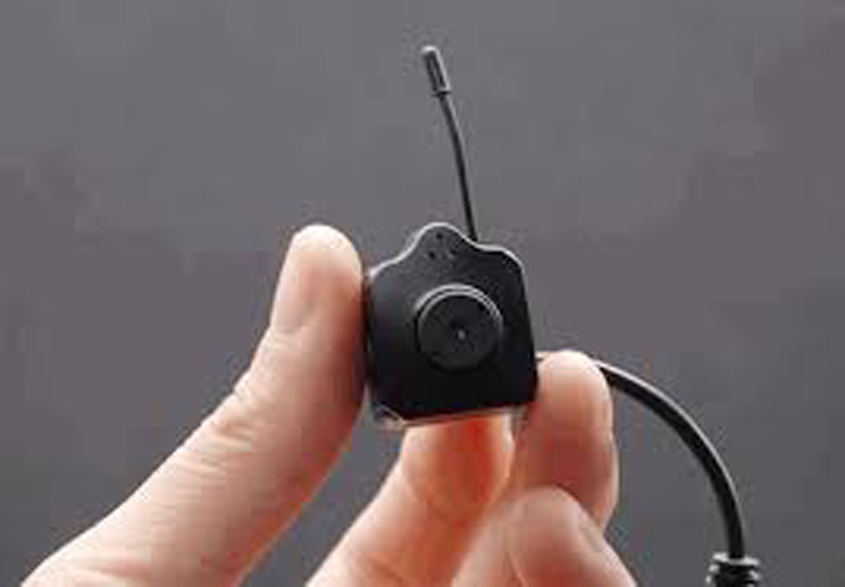 Minutes after the Supreme Court ruled privacy is a fundamental right of every citizen in a landmark judgment on Thursday, mechanics were called in many homes and offices in the Indian capital—including the zone that is Lutyens Delhi—to dismantle bug detectors and handset jammers because these were no longer needed.
Minutes after the Supreme Court ruled privacy is a fundamental right of every citizen in a landmark judgment on Thursday, mechanics were called in many homes and offices in the Indian capital—including the zone that is Lutyens Delhi—to dismantle bug detectors and handset jammers because these were no longer needed.
The list of those who had installed these machines—I can vouch only for Delhi—was huge, stretching from advocacy agents to politicians to corporate captains, even seasoned editors. Why? They all feared the sting camera, a hidden instrument for recording, could be used on them.
And there were others who were confident of handling the spy cams, but lived in perennial fear of being bugged by their business rivals, even cops or faceless officers of the Intelligence Bureau (IB) or the Central Bureau of Investigation (CBI). Their fear had mounted ever since the infamous tapes of a lobbyist rattled politicians, corporate honchos, lobbyists and editors after two news magazines carried portions of the transcripts and uploaded bulk of the conversations on their website.
No one wanted more tapes to be uploaded by the newsmagazines, some even went to laboratories in London to prove that the tapes were false. In short, their fear was justifiable.
But now, the fear of being intruded, the fear of being recorded, the fear of being taped have almost diminished over the skies of India, thanks to this judgement, which means the cops would, squarely, haul up everyone trying to invade anybody’s privacy to mount a sensational, breaking headline on their news channels. In short, the whirring cameras can stay, but not the spy cams. So production houses specialising in sting, sting and sting will have to find alternative sources of income.
This, actually, is the virtual death of sting operations across India, unless, of course, a journalist can prove the sting was done in interest of public service journalism. But then, it would be up to the courts to decide what is in public interest and what is not. The game of miniaturisation of cameras and transfer of military and spy techno to commercial applications is now going to be tough, really tough.
For those who fear the sting cameras, the reality is encouraging: Sting cameras are, anyway, floundering, the website that first used it in 2000 and then in 2001 is almost a dead horse, unpaid salaries have kept staff away and their iconic office in South Delhi now turned into a salon by its new tenant for heady hair transplants.
News channels which did stings like juvenile delinquents to prove the market for illegal blood exists right next to all big hospitals in India, junkies smoke pot under the flyovers of all big cities, and couch potatoes exist in Bollywood, have either traded their newsrooms to departmental stores or shifted their focus to real estate, even growing chickpeas.
The word “sting” in India has already lost a lot of its teeth because there was only one version of truth, some even compared it with the word “encounter” that also had only one side of the story. In their zeal to prove to their editors that they are brilliant and capable, journalists, time and again, did stings, only to be told that the tapes need to be cleaned out or trashed. And sadly in many cases, tapes which were not used by the channels were often used by the editors to blackmail those recorded without notice, a very disturbing trend in the hinterland.
And there were others who took the cue from the reporters and opened their makeshift newsrooms, setting a very disturbing trend. Politicians started stinging politicians, cops on cops, and corporate captains hired flunkies to get anything and everything from their rivals. Sting turned worse than a demonstration of an act in black and white, losing its credibility for once and (almost) all. It was almost like bullets on handcuffed men to seek a Pulitzer.
Now, stings must work very well, and the journalists should be able to defend it as public service journalism, an act which benefits the masses, and also, the nation at large. This means stings which can easily be discredited would fly out of the window. In short, the job of the journalist has become tougher, probably toughest in India.
Hours after the Supreme Court announced the verdict, senior members of the Trinamool Congress went into a huddle, asking their lawyers if the verdict could be used to stonewall sting operations carried out by reporters of Narada.com. In the capital, members of the ruling Aam Aadmi Party told Arvind Kejriwal it would now not be a good idea to tape people seeking bribes, some alternate ways need to be developed.
Sting camera operations are heading out to the highways. No one is saying it must stop but doing it would be very risky, it must be so big that no one will dare copy it, and even the courts will admit it was done in public interest. This is not Google journalism that is easily practised at the desktops, this is the kind of journalism which reporters have proudly tagged as Ground Zero.
Journalists at Delhi’s cheapest watering hole near Parliament and coffee bars in the plush Khan Market are introspecting. For them, the Thin Red Line has become thicker, now it has a seven-letter word embossed by the country’s apex court: Privacy. Crossing it would invite some serious trouble.
So, what is the alternative?
Shantanu Guha Ray is the India Editor of Central European News, a Vienna-based feature news agency.

